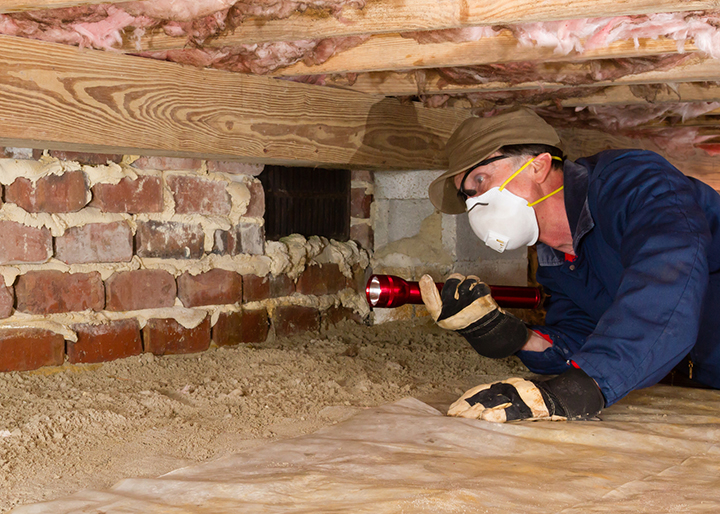From Portfolio Asset to a Rental Home

A New Perspective on SFR Management
By Nickalene Badalamenti-Kalas
The housing crisis of 2008 sent seismic waves through communities across the country and left a lasting impact on how investors and property management companies handle single-family rental property management. That event will not be the last of its type, and the lessons it imparted to investors, property managers, tenants, and their communities bear continual scrutiny as the housing market is buffeted by economic pressures both natural and manmade.
The essential truth that should remain foremost in the minds of thoughtful investors and property managers is that people do not want a house. They want a home: a safe, sound, secure home they can make their own, within an attractive and economically stable community of like homes. Asset management strategies that proceed from this fact — with full transparency and regulatory compliance — will result in consistently satisfied stakeholders. All stakeholders.
An Ounce of Prevention
This shift in perspective — treating properties as private homes rather than numerical assets — is particularly critical when considering at-risk properties where occupancy is uncertain. Home deterioration is an exponentially accelerating process, and rapidly leads to plummeting home values and community blight.
Timely and direct asset stabilization, as well as preventive and ongoing maintenance activities — utilizing experienced tradespeople with specific skillsets — can forestall this trend and stabilize properties and values. Here are important considerations in the process.
Monitoring
Proper care and monitoring of at-risk homes are paramount. The recent popularity in single family rentals, pandemic protections, economic instability and severe weather events have created a perfect storm for homes that may be slipping through the cracks. Monitoring delinquency trends, resident and municipal concerns, and being proactive can directly stabilize homes and communities. Having an experienced asset management partner, with nationwide, dedicated, and expert field-service representatives on the ground, can help identify and alleviate these risks.
Inspection
Once a home becomes at-risk, a proper and thorough review of assets should be made, within legal limits. Proper training, oversight, and support of the process is extremely important. Inspectors should understand the spirit of this often-delicate task, while still providing accurate and complete documentation of the property’s condition and occupancy. This is another area where expert asset management professionals can deliver a fast, technology-enabled inspection — fully documented with geo-tagged and time-stamped photos — that meets all code compliance regulations.
Equally important is the process by which these data are processed. There are numerous indicators for a successful occupancy determination. Correct reporting of utility status, condition of home and grounds, postings on the home, presence of personal property, and in many cases neighbors can be helpful. Inspection reporting should have triggers that notify stakeholders of areas of concern.
Negative utility status, signs of theft, vandalism or fire should be immediately reported to the client. Complete and prompt reporting are key to filing claims, chargebacks, and overall asset stabilization. In cases where eviction is unavoidable, the need for experts on the ground to manage protocols such as cash-for-keys — and to coordinate in full compliance with every agency – becomes clear.
Be Proactive
When legally possible, an investor or property manager should take all necessary steps to preserve and protect the asset. Homes are not designed to be left open to the elements with non-working utilities. Neglect and deferred maintenance come with telltale signs: overgrown lawns, debris and detritus accumulation, and excessive postings are indicators of vacancy, and can lead to further violations, theft, or vandalism.
The condition of the home interior is equally important. Homes should be free of infestation and intrusion. Any signs of mold, mildew, or roof leaks should be reported with location, size of area, cause, and remediation plan. All physical hazards — broken steps, handrails, tripping hazards — should be proactively addressed. Exposed utilities including gas, water and electricity should be properly capped off, regardless of present utility status. Plumbing, electrical and HVAC should be in good working order and up to code
Communication
Residents and municipalities are at ground zero for “keeping small fires from becoming large fires” and being proactive with residents when asset stabilization concerns arise. Being available, transparent, and providing effective violation resolutions with full code compliance will help prevent potential legal and reputational risks in the future.
Right Vendor, Right Time, On Time
Third party partners range from general contractors, trade partners and handymen to licensed field service professionals, locksmiths, debris removal and storage companies. It is essential that the correct vendor partner be engaged for each required task. Again, we see the importance of utilizing an asset management partner who has established relationships with a seasoned service vendor network. They will be experts at their craft, with the experience to know the most efficient solution to any challenge, and the technology tools to accelerate the process.
Market- and Tenant-Ready
The considerations outlined above reflect a shift in perspective that leads not merely to new tenancy, but enduring tenancy that drives property preservation, increases value, and enhances communities.
But this is not a simple process, nor a responsibility to be lightly assumed. From the legally and emotionally charged eviction process, to the regulatory minefield that is home inspection, stabilization and preservation, moving a property to a market- and tenant-ready state requires expertise, on-the-ground experience, and resolute attention to detail at every stage of the process. An asset management partner that can deliver that level of end-to-end performance is the servicer’s strongest ally.














